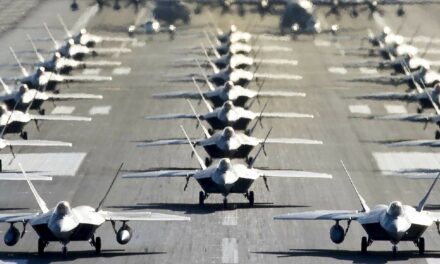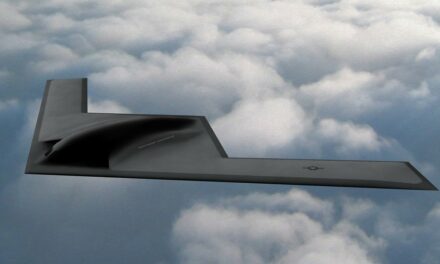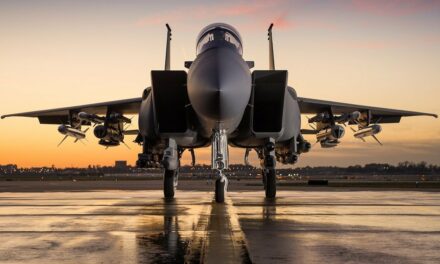We support our Publishers and Content Creators. You can view this story on their website by CLICKING HERE.
What You Need to Know: The U.S. Air Force’s Resolute Force Pacific (Reforpac) exercise in mid-2025 will involve 300+ aircraft and coincide with the Talisman Sabre multinational event.
-It’s a key step in redefining force design for modern threats. Air Force Chief of Staff General David Allvin emphasized abandoning terms like “contested” and “permissive” in favor of a capability-based approach categorized into Mission Areas (MA1-MA3). The shift focuses on agility, speed, offensive capabilities, and cost-effective combinations of stealth and uncrewed systems.
-The exercise is also critical to assessing new technologies and concepts amidst tight budgets and evolving defense needs.
B-21. Image Credit: Northrop Grumman
The U.S. Air Force Looks to the Future
The Resolute Force Pacific (Reforpac) exercise will be the largest US Air Force non-combat deployment in many years, with more than 300 aircraft involved. The two-week exercise in mid-2025 will coincide with the multinational, biennial, all-domain Talisman Sabre training event.
But it is also an important step in a radical redesign of the force, USAF Chief of Staff General David W Allvin told the Air Force Association Mitchell Institute’s first forum on future airpower on 13 November—one that includes new definitions that remove familiar terms like ‘contested’ and ‘permissive’ from the service’s vocabulary and may change its acquisition goals.
Since the end of the 1990s geopolitical unipolar moment, when the United States faced no real adversary, Allvin notes, the air force has ‘crowdsourced the fight’ to support prolonged operations in low-threat environments, pulling small units from 93 locations ‘because we didn’t want to break the bases.’
Reforpac will draw large forces from fewer units, to provide more intensive and realistic training. It’s a concept, he said, that was battle-tested in part when the USAF reinforced its Middle East strength after the 7 October 2023 Hamas attacks on Israel.
As air force leadership and the new Integrated Capabilities Command carry forward a process called Force Design, Reforpac is designed generate real-world experience. To keep Force Design focused on results, Allvin says, every question ends with ‘in order to do what?’
One lesson is already emerging: the US Air Force may not be able to afford to structure itself entirely around high-end (read: stealthy) aircraft and systems—and it may not need to. ‘If there are systems there that are less lethal,’ Allvin says, ‘they are there so that we don’t grind the others down facing a cost-imposition strategy.’
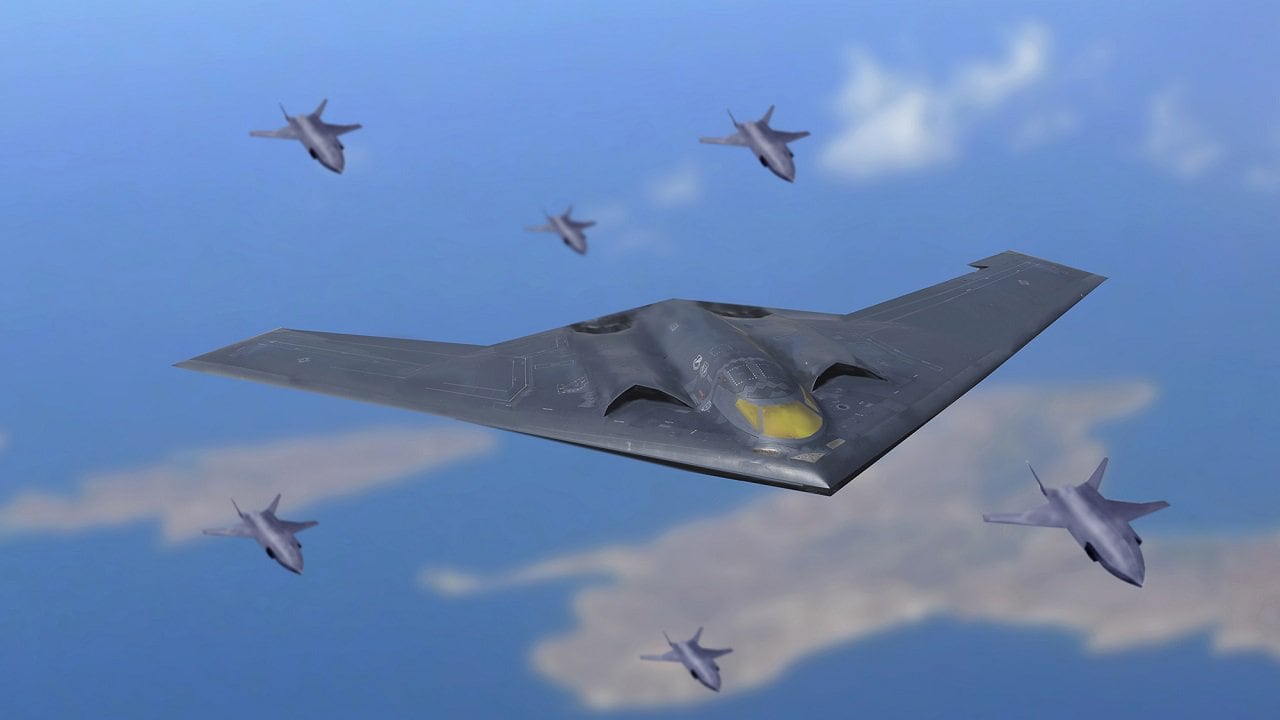
An artist illustration depicts a U.S. Air Force extended-range B-21 Raider escorted on a mission by armed unmanned next generation air dominance platforms. This fictional bomber features longer, wider wings, and a deeper fuselage that accommodates larger fuel tanks and dual weapons bays that enables the bomber to carry a much larger and varied payload. Mike Tsukamoto/staff; Greg Davis/USAF
An air force can use mass, with uncrewed systems, to impose cost, Allvin adds. ‘Mass may be about having assets that must be addressed, to deplete the adversary’s inventory.’ That’s the theory behind one new effort, a low-cost long-range missile named Project Franklin (because it must be respected) based on an Defense Innovation Unit platform design.
This means big changes in future force structure and equipment plans: for 30 years, since the Desert Storm campaign against Iraq, the end of the Cold War, and the inception of the Joint Strike Fighter program, the USAF’s destination has been an all-stealth force—yet that is still decades away, the last F-35 delivery having slipped into the late 2040s.
No conclusions have been reached—for an Air Force futures conference, the discussion was astonishingly NGAD-free—but Allvin set down some principles for force design. ‘This is a design for the changing character of war. New geostrategic patterns or a new national defense strategy can emerge, and I don’t want people to leave here thinking this is an Indo-Pacific force design.’
Allvin’s principles include:
‘Take back the offensive. You can’t retreat to long range. You have to be able to fight close in, where the partners are.
‘Speed is imperative. The adversary will put effects in immediately. There will not be an iron mountain’—the informal term for massive, centralised supply dumps—‘and we need to disrupt and deny early.
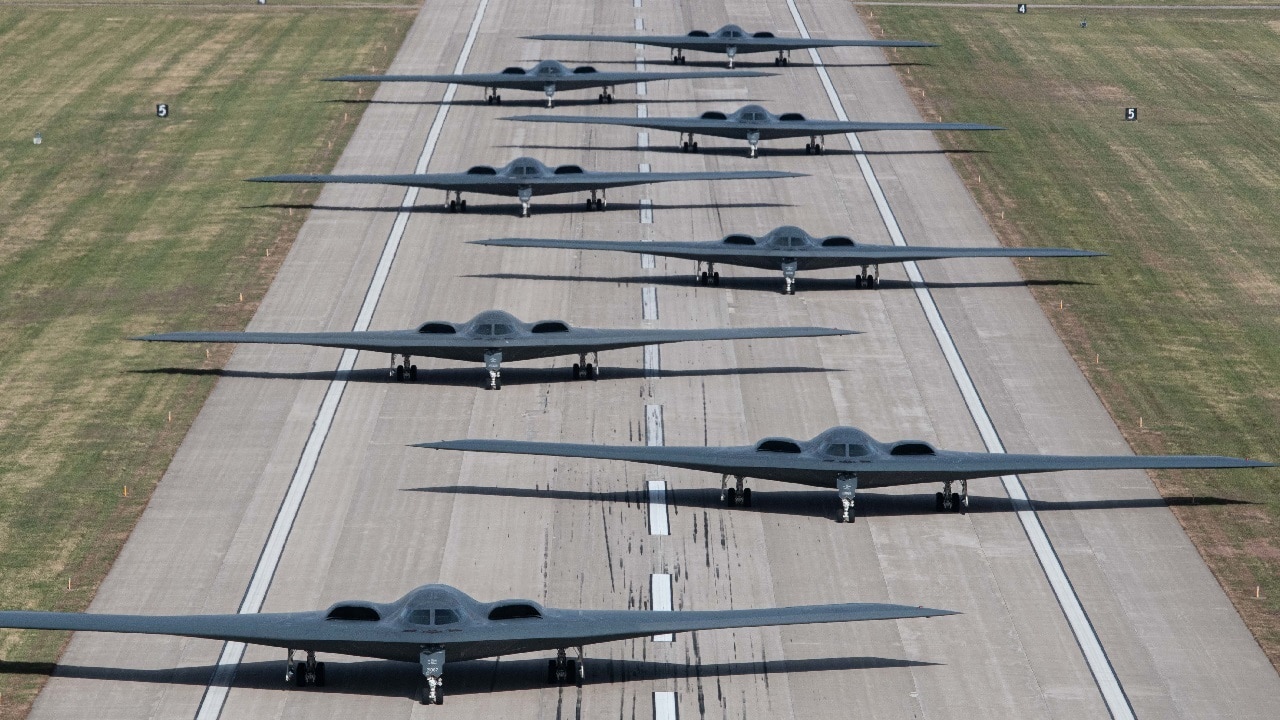
B-2 Spirit stealth bombers assigned to Whiteman Air Force Base taxi and take-off during exercise Spirit Vigilance on Whiteman Air Force Base on November 7th, 2022. Routine exercises like Spirit Vigilance assure our allies and partners that Whiteman Air Force Base is ready to execute nuclear operations and global strike anytime, anywhere. (U.S. Air Force photo by Airman 1st Class Bryson Britt)
‘Solve for agility. We’ve shown too much hubris about our ability to predict the future, even in our own technology base.’
Terms like ‘denied’, ‘contested’ and ‘permissive’ get lost in arguments over their meaning, and, Allvin says, ‘when you add fractional orbital bombardment systems and cyber, everything is contested.’
In the new force design lexicon, detailed in a document released on 15 November, the air force defines ‘mission area’ capabilities needed to respond to three threat bands, according to density, complexity and distance as mission areas.
—Mission Area 1 (MA1) capabilities can ‘live within and generate combat power from the dense threat area which will be under constant attack’ from missiles or drones.
—MA2 capabilities ‘operate from the defendable area of relative sanctuary beyond the umbrella of most adversary ballistic and cruise missiles … and project fires into highly contested environments.’
—MA3 capabilities ‘create the flexibility and mass to span a range of potential future crises … with positions resilient to limited adversary attack.’
‘It would be great to have all-MA1 forces,’ Allvin said, ‘but it costs too much.’ That point was underscored by Deputy Chief of Staff for Air Force Future MG Joseph Kunkel, whose portfolio includes Collaborative Combat Aircraft (CCA) efforts: ‘If you plan for anything below MA1 as a lesser, included case, you have overkill in MA2 and MA3.’
The new concept is clearly aligned with CCA, but has implications in other areas. High-end platforms can be made more versatile. Doug Young, Northrop Grumman vice president of strike systems, noted that the open systems architecture of the B-21 bomber will support a wide variety of weapon loads, including mixed load-outs, and that the same capability is being retrofitted to the B-2.

Image of B-2 Spirit stealth bomber. Image Credit: Creative Commons.
The B-2, Young noted, could physically accommodate 240 GBU-39 Small Diameter Bombs, but that was ‘a mission management problem’ when the aircraft was initially developed. We can, he suggested, look at ‘different choices’ now. (Think of eight cruise missiles coming out of one bay and 120 Franklins from the other.)
That capability could be part of a ‘joint long-range kill chain’ concept revealed by Lieutenant General David Harris, deputy chief of staff for Air Force Futures. ‘We talked to the navy and realised we were both investing in the same stuff’ for long-range attack, Harris said, ‘and then we brought the Space Force in.’
Big ambitions. But Allvin’s immediate concern is that Reforpac can be funded, given the post-election turmoil in Washington. ‘I hope that we’re not on a continuing resolution next summer’—which occurs if no budget can be agreed on—‘so we can fund it properly.’
About the Author:
Bill Sweetman is a veteran, award-winning journalist and aerospace industry executive. He is the author of Trillion Dollar Trainwreck: How the F-35 hollowed out the US Air Force. This article has been updated to show a complete quoted sentence from General David W Allvin. This first appeared in ASPI’s the Strategist.
Image Credit: Creative Commons.

 Conservative
Conservative  Search
Search Trending
Trending Current News
Current News 
